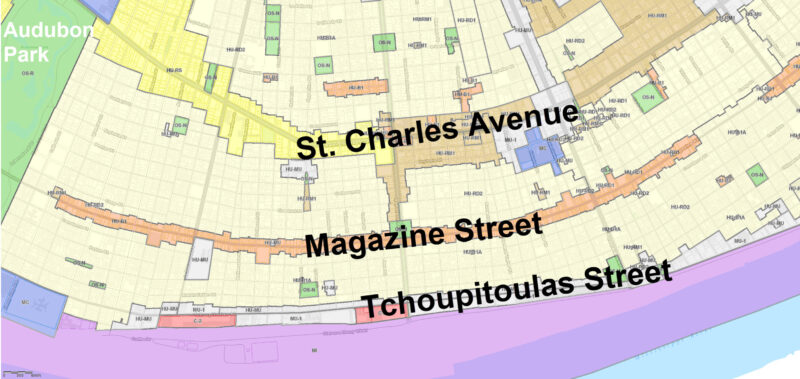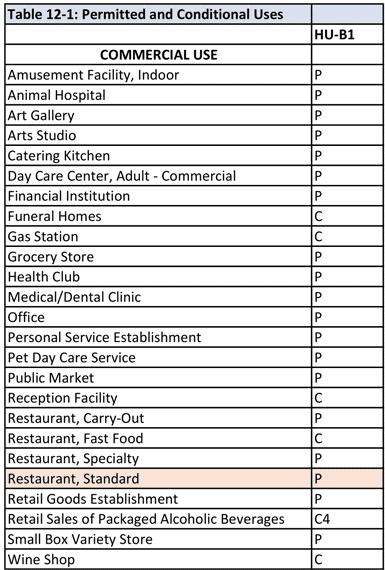One of the first challenges in opening a business is to find the right location, and the most likely concerns about the location are traffic count, visibility, access and nearby consumer spending patterns. However, one thing that should be high on your to-do list should be to check out the zoning and permitted uses. If you are considering opening a restaurant on Magazine Street, read this first.

For example, let's say you want to open a restaurant on Magazine Street in New Orleans; should be a no-brainer, right? There are lots of restaurants already on Magazine Street and the affluent residents have a propensity to dine out often, making it a perfect location. Almost the entire Magazine Street is zoned by New Orleans Planning Department as HU-B1, shown in orange on the map above. This zoning category allows restaurants as a permitted use. Everything is a go, right? Not so fast.

If you thoroughly research the zoning, you will find permitted uses for each zoning category, as shown in the table above; however, Magazine Street has two "Overlay Districts", which are additional restrictions to a permitted use that require special controls in certain areas of New Orleans that have a special character. One overlay is called CPC Character Preservation Corridor Design Overlay District, and the other is called Magazine Street Use Restriction Overlay District.
The most restrictive is the Magazine Street Overlay which requires approval for a conditional use for any standard restaurant, subject to the New Orleans Comprehensive Zoning Ordinance section 18.20, which requires:
Getting approval for a conditional use requires a city council vote plus a detailed 50-100 page report and approval by the planning department, plus a public meeting of neighborhood homeowners within 300 feet. And once approved, an ordinance must be drafted by the city attorney, then a mandatory 21 day waiting period, then the mayor has to sign the ordinance. Then you have to submit drawings and plans to the New Orleans Planning Department who has to approve the plans and then the Clerk of Court records the plans at the Office of Conveyance. Then you can apply for the required building permits. One drawback is that the city planning commission only meets every two weeks and the city council only meets every two weeks, and each has a different schedule. The result is that the conditional use approval process usually takes about 6 months, and that is if there are no hiccups.
Developments like this can be done, and often this barrier to entry will discourage many. The end result can be a lack of competition. Restauranteurs and developers just need to factor in the lost time and opportunity cost, along with additional interest expense on funding, to determine if projects are feasible and how the zoning can affect the rate of return on your investment.


